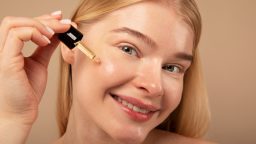Cellulite is a common and natural occurrence that affects many people, especially women. It typically appears as dimpled skin on the thighs, hips, and buttocks, caused by fat deposits pushing against the connective tissue underneath the skin. While cellulite is completely normal and harmless, many seek treatments to reduce its appearance. There are a wide variety of products and treatments available that claim to help with cellulite, but what really works? Here’s a breakdown of the most effective treatments for cellulite and what you can expect from them.
- Topical Creams and Lotions
Topical creams are one of the most commonly used treatments for cellulite. Many creams contain ingredients such as caffeine, retinol, and peptides, which are believed to reduce the appearance of cellulite by tightening and smoothing the skin, improving circulation, and breaking down fat.
- What to look for: Caffeine is one of the most common ingredients in cellulite creams. It works by temporarily tightening the skin and improving blood flow, which can make the skin appear smoother. Retinol, often used in anti-aging skincare, can help thicken the skin, which may reduce the visibility of cellulite over time. Peptides may also help stimulate collagen production, which improves the elasticity of the skin.
- What works: While these creams can provide temporary results by tightening the skin and improving the texture, the effects are often subtle and short-lived. The creams are more effective when used in combination with other treatments, such as massage or exercise.
- Massage Therapy and Tools
Massage can help reduce the appearance of cellulite by stimulating circulation and lymphatic drainage. Professional massage techniques, such as endermologie, or at-home tools, such as massage rollers or cellulite massagers, can help break down the fat deposits that cause the dimpled appearance.
- What to look for: Endermologie is a mechanical massage treatment that uses a machine with rollers and suction to target the skin and underlying tissue. It’s known to temporarily reduce the appearance of cellulite by improving circulation and encouraging lymphatic drainage. At-home tools like rollers and vibrational massagers can also offer a similar effect but are generally less effective than professional treatments.
- What works: Studies show that massage therapy can improve skin tone and reduce the appearance of cellulite temporarily. However, consistent treatments over time are necessary to see noticeable and lasting results. Regular use of massagers at home can also be beneficial when combined with other anti-cellulite treatments.
- Laser and Radiofrequency Treatments
Laser treatments, such as Cellulaze, and radiofrequency treatments, like Velashape, are some of the more advanced cellulite treatments available. These non-invasive treatments target the underlying cause of cellulite by working deep into the skin to break up fat, tighten the skin, and stimulate collagen production.
- What to look for: Cellulaze uses laser technology to target the fibrous bands under the skin that cause the dimpling effect. The laser also helps to promote collagen production, which improves skin elasticity. Radiofrequency treatments use heat to target fat cells and stimulate collagen production, improving the skin’s appearance.
- What works: Both laser and radiofrequency treatments have been shown to provide long-lasting results, particularly in terms of improving skin texture, reducing fat, and stimulating collagen. These treatments can reduce the appearance of cellulite significantly, but they often require multiple sessions and can be expensive.
- Cryolipolysis (CoolSculpting)
CoolSculpting is a non-invasive procedure that uses freezing technology to target fat cells. This treatment is designed to reduce stubborn fat in specific areas of the body, including those affected by cellulite. By freezing fat cells, the body is able to naturally eliminate them over time, resulting in a smoother appearance.
- What to look for: CoolSculpting is FDA-approved for fat reduction and has been used to target areas like the abdomen, thighs, and flanks. It works by freezing fat cells without damaging the skin, muscles, or nerves.
- What works: CoolSculpting can effectively reduce fat in areas affected by cellulite, leading to smoother skin. However, it’s not a cellulite-specific treatment, and the results can vary depending on the person. Multiple treatments may be required for optimal results.
- Microneedling (Collagen Induction Therapy)
Microneedling, or collagen induction therapy, involves using tiny needles to create micro-injuries in the skin, which stimulates the body’s natural healing process. This process boosts collagen production and can help improve the appearance of cellulite by thickening the skin and making it more elastic.
- What to look for: Microneedling devices are either used in professional clinics or can be done at home with smaller needles. For cellulite, professional treatments with deeper needles are usually recommended, as they can reach the layers of skin where cellulite forms.
- What works: Microneedling can improve skin texture and reduce the appearance of cellulite by promoting collagen production. While it requires multiple sessions, many people experience noticeable improvements in skin firmness and elasticity over time.
- Body Contouring Treatments
Body contouring treatments like liposuction or non-invasive procedures such as SculpSure or truSculpt are designed to target and reduce fat deposits in problem areas. These treatments can help reduce the appearance of cellulite by improving the overall contours of the body.
- What to look for: SculpSure and truSculpt are non-invasive treatments that use heat and laser technology to target fat cells in areas affected by cellulite. These procedures are designed to slim down problem areas and reduce the appearance of lumps and bumps.
- What works: Body contouring treatments can help reduce the amount of fat in areas prone to cellulite, which in turn can improve the skin’s appearance. These treatments may be more effective when combined with other methods like massage therapy or topical treatments.
- Exercise and Strength Training
Regular exercise, particularly strength training and cardio, can help reduce the appearance of cellulite by improving muscle tone, increasing circulation, and reducing overall body fat. Exercise won’t directly remove cellulite, but it can make the skin appear firmer and smoother.
- What to look for: Focus on exercises that target the legs, thighs, and buttocks, as these are the areas most commonly affected by cellulite. Squats, lunges, and leg presses are great for toning and firming the muscles in these areas.
- What works: Regular exercise helps reduce overall body fat and improves muscle tone, which can reduce the dimpled appearance of cellulite. A combination of strength training and aerobic exercise is most effective for promoting a smoother, firmer appearance.
- Diet and Hydration
A healthy diet and proper hydration can help reduce the appearance of cellulite by improving skin elasticity and reducing fat accumulation. Eating a balanced diet rich in fruits, vegetables, and lean proteins can support healthy skin, while staying hydrated helps maintain the skin’s elasticity.
- What to look for: Focus on eating foods that are rich in antioxidants, such as berries, leafy greens, and citrus fruits, to protect the skin from free radical damage. Drinking plenty of water can help keep the skin hydrated and firm.
- What works: While diet alone can’t eliminate cellulite, maintaining a healthy weight, staying hydrated, and eating nutrient-rich foods can improve the overall texture and appearance of your skin.
Conclusion
While there’s no permanent solution for completely eliminating cellulite, many treatments can significantly reduce its appearance. Topical creams, massage, laser therapy, and body contouring can all offer visible improvements, and combining these with healthy lifestyle habits such as exercise and diet can make a big difference in the long term. If you’re considering professional treatments, it’s important to consult with a dermatologist or skincare specialist to determine the best approach for your skin type and concerns. Keep in mind that consistency is key, and the best results come from combining multiple strategies over time.





